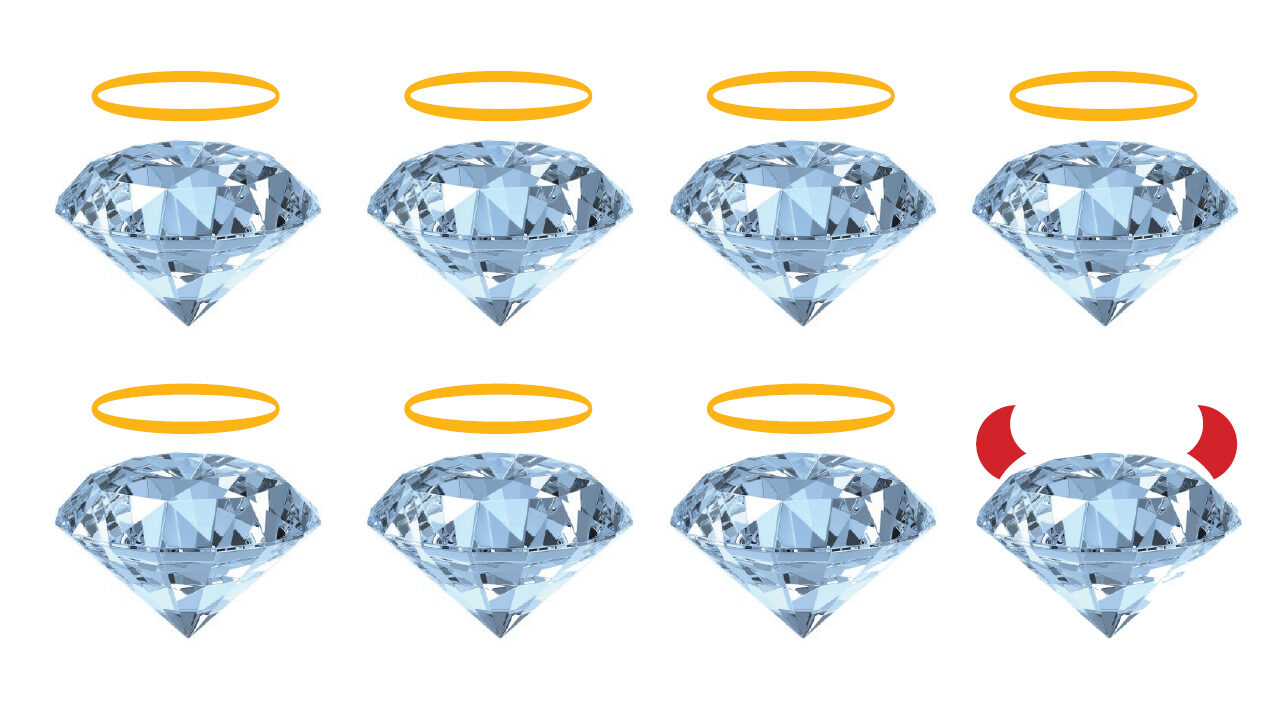From the discovery of diamonds’ chemical makeup in the 18th century, to lab-grown stones hitting the consumer market en masse, synthetic production has come a long way.
It’s a tale of man aspiring to emulate nature – and even supersede it – by creating one of its most precious offerings: diamonds. The Enlightenment period at the end of the 18th century saw scientists identifying the chemical composition of diamonds as pure carbon. The first was French chemist Antoine Lavoisier in 1772. A few years later, Englishman Smithson Tennant confirmed the results of his experiments.
During the following two centuries, researchers used laboratory furnaces to try and turn carbon into diamonds, but without much success, producing more scarred assistants than precious stones.
The first synthetic diamonds appeared in the 1950s, when US company General Electric, used the High Pressure-High Temperature (HPHT) method to achieve its revolutionary results – modest though they were at .00075 carats each.
All lab-grown diamonds reported between 1970 and 1991 were produced on a small scale for use in industrial applications, rather than for jewelry purposes. During those two decades, GE, De Beers Diamond Research Laboratory, and Sumitomo Electric Industries were at the forefront of the research into HPHT techniques.
Clarity was limited by metallic inclusions, and color was generally yellow or brown as a result of nitrogen impurity. In 1991, a 14.2-carat, good-quality industrial monocrystal HPHT diamond came from De Beers, opening up a new phase of technological development.
The next stage was to achieve near colorless HPHT synthetics. American, Russian and Japanese scientists raced to be the first to generate a gem-quality synthetic in their laboratories.
With these technological advancements came a need for the natural diamond industry to find ways of identifying synthetics, which were increasingly resembling mined stones. In 1996, De Beers published an article on instruments developed for just that purpose. It recounted that the company had produced an experimental range of 0.41- to 0.91-carat polished HPHT synthetics, and described how such stones could be distinguished from real ones.
Parallel to the HPHT research, another means of producing synthetic diamonds was emerging: chemical vapor deposition (CVD), which utilized carbon- containing gases such as methane.
It was not until the turn of this century that the general public became aware of synthetics in the jewelry market, with companies such as Apollo Diamond and Gemesis marketing their mostly yellow HPHT diamonds to consumers.
Today, most of the output still goes toward industrial applications such as precision manufacturing, cutting-edge electronics, space exploration and medical devices. However, synthetics have begun attracting more interest from the jewelry industry, whether it’s because Hollywood celebrities are embracing them or because natural-diamond producers consider them a threat.
Lab-Grown Diamonds Timeline
1 7 9 7
English chemist Smithson Tennant demonstrates diamonds are composed of pure carbon.
1 9 5 4
General Electric creates first commercially available artificial diamonds using HPHT methods.
1 9 7 0 s
First gem-quality synthetic diamonds appear on market.
1 9 9 0 s
Apollo Diamond Inc. (now Scio Diamond) discovers way to grow monocrystalline diamonds.
2 0 1 5
Square emerald-cut, 10.02-carat stone from New Diamond Technology believed to be largest colorless synthetic diamond to date.
And it’s not just the interest that’s growing. Last year, Russian-based company New Diamond Technologies unveiled a 10.08-carat blue synthetic diamond – the largest HPHT diamond recorded to date.
Regardless of where one stands on the ethical questions these diamonds have raised in the industry, the technological achievements in this field are nothing short of impressive.




